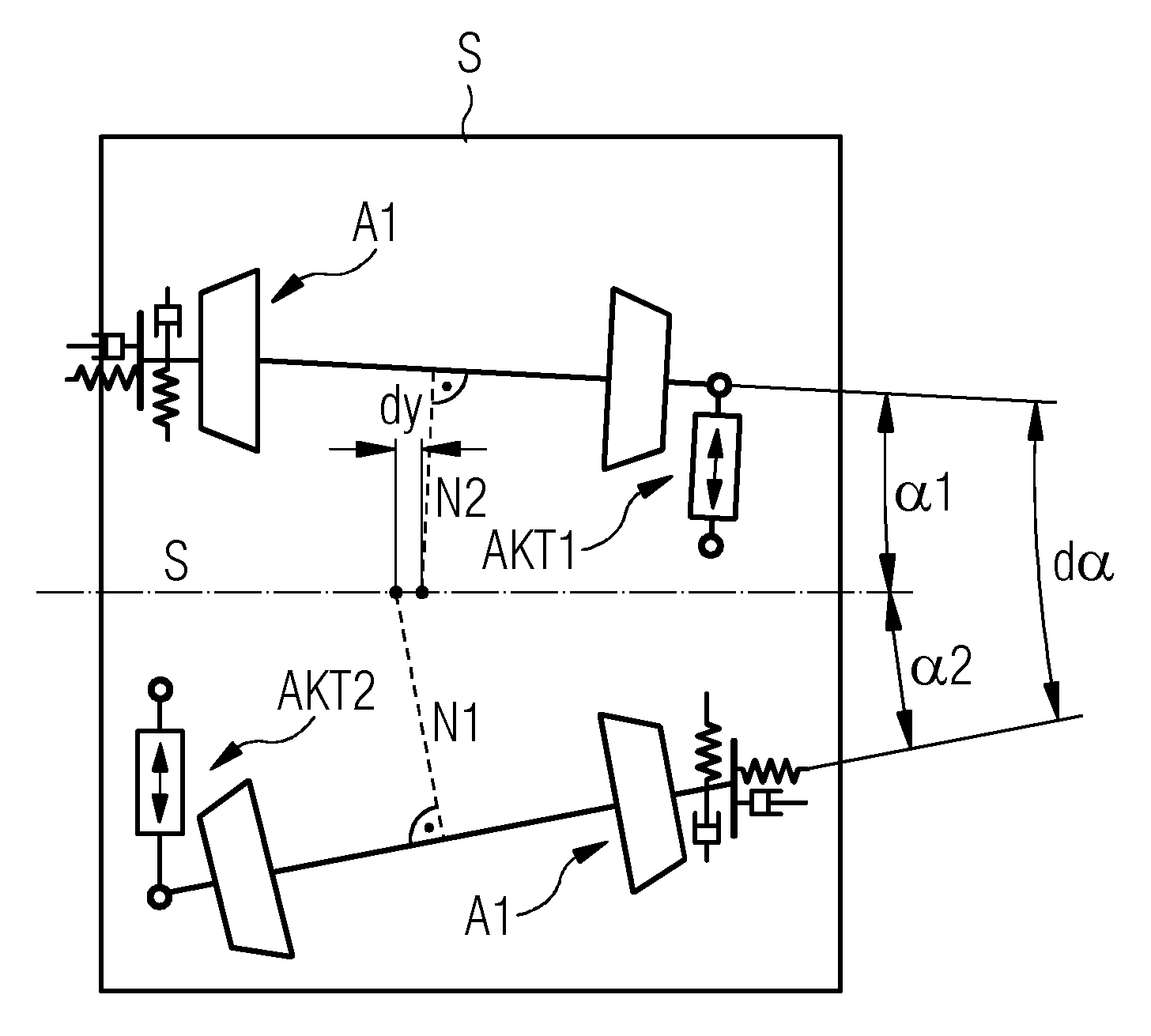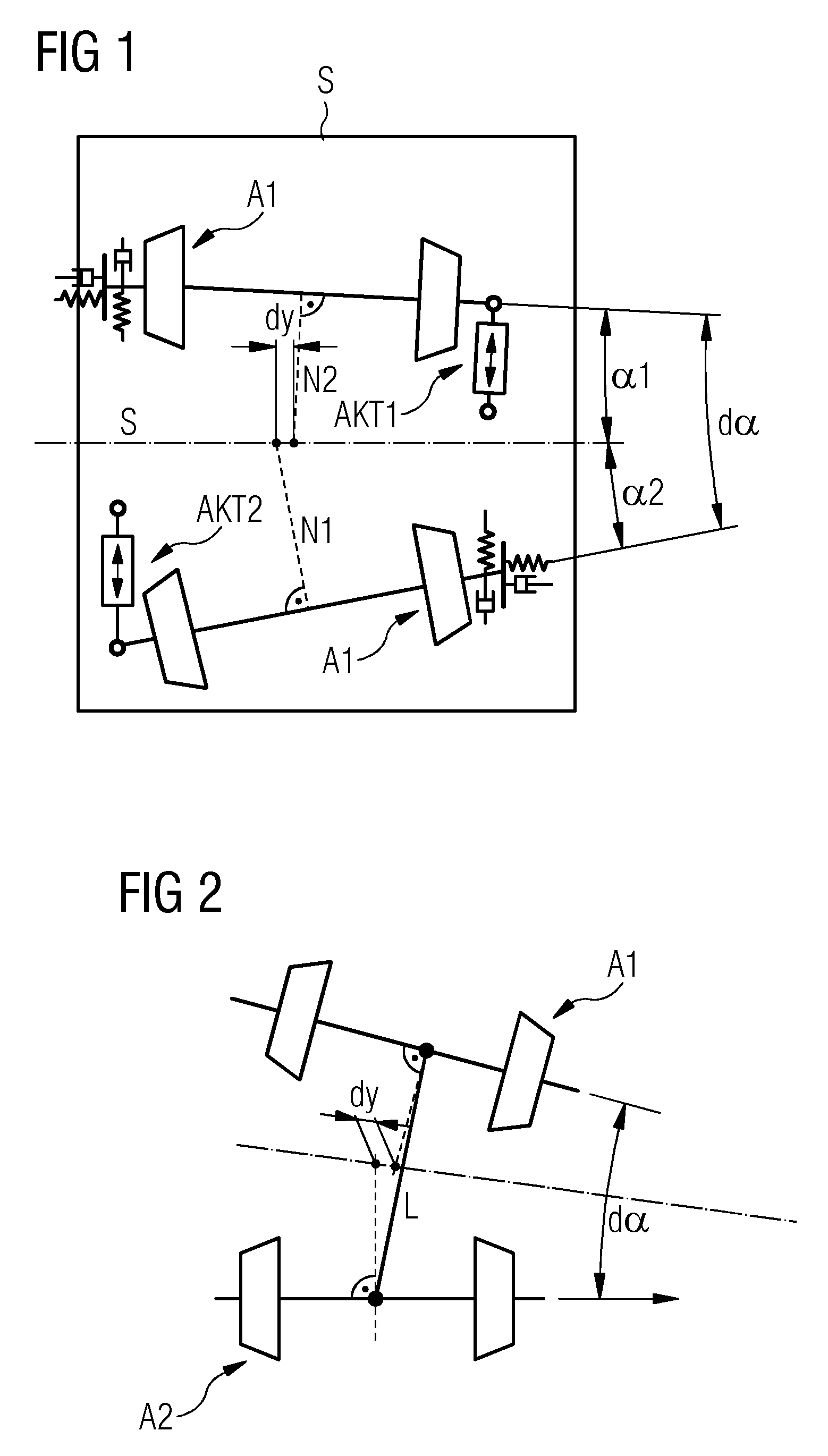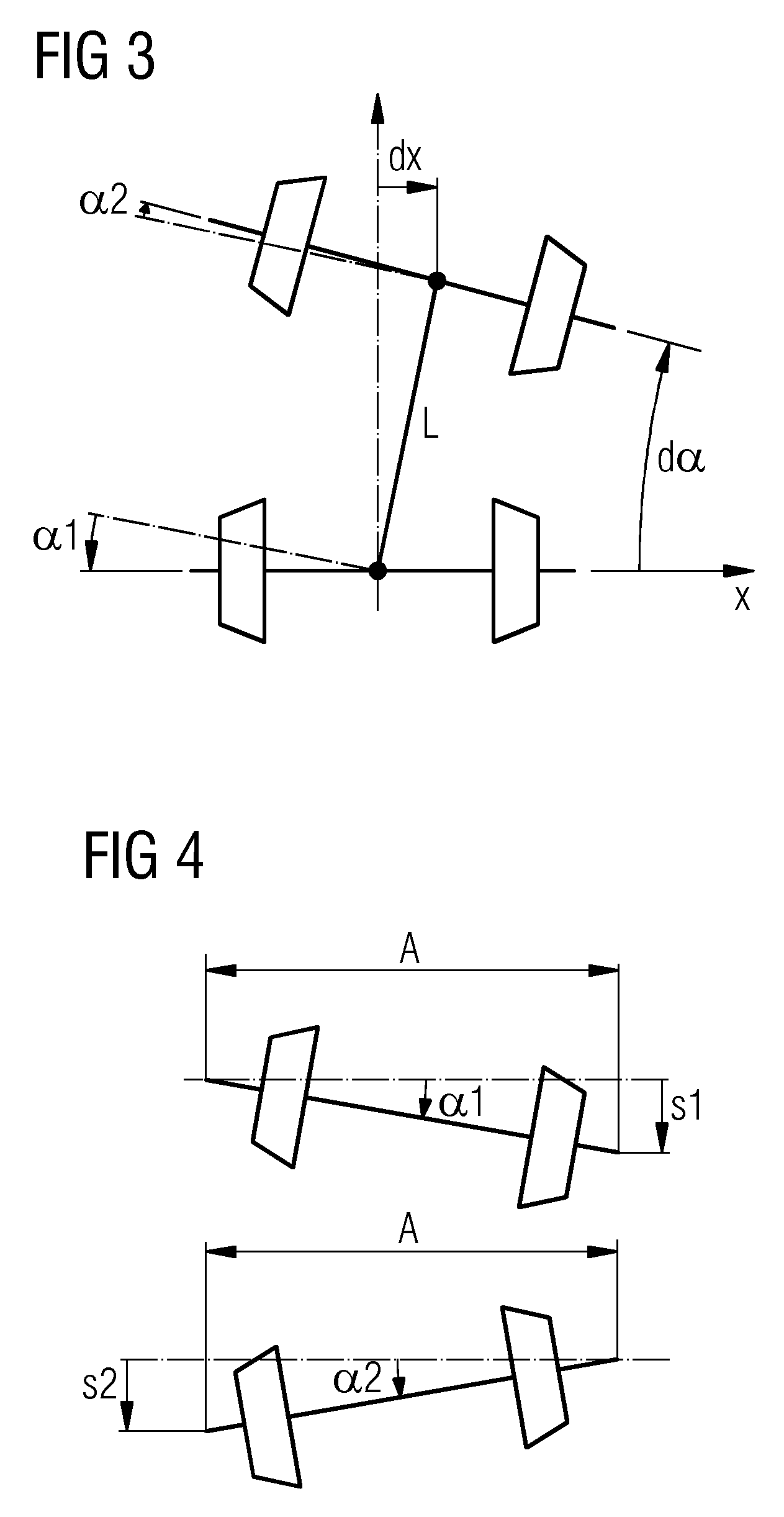Rail vehicle with variable axial geometry
a technology of axial geometry and rail vehicles, applied in passenger carriages, railway components, underframes, etc., can solve problems such as fatigue, negative effects of rails and wheels, and profile wear by removing materials, and achieve the effect of reducing the cost of actuators required
- Summary
- Abstract
- Description
- Claims
- Application Information
AI Technical Summary
Benefits of technology
Problems solved by technology
Method used
Image
Examples
Embodiment Construction
[0029]As an example and a schematic, FIG. 1 shows the principle structure of a rail vehicle with variable axle geometry. A rail vehicle S comprising two axles A1, A1, which are each supported horizontally around a pivot point at one end of each variable axle A1, A2. On the side of each axle A1, A2 opposite the pivot point an actuator AKT1, AKT2 engages respectively at the end of each axle A1, A2, which is connected at its other end to the frame of the rail vehicle S. By means of modulation of the length of the actuators AKT1, AKT2 a separate specific horizontal angle α1, α2 can thus be set for each axle A1, A2. If different horizontal angles α1, α2 are set for consecutive axles a lateral displacement dy and an axle angle dα of α1+α2 is produced between these axles. It is shown that as well as the axle angle dα, the lateral displacement dy has a decisive influence on the wear or damage behavior of the vehicle.
[0030]This lateral displacement dy is defined geometrically by the normals ...
PUM
 Login to View More
Login to View More Abstract
Description
Claims
Application Information
 Login to View More
Login to View More - R&D
- Intellectual Property
- Life Sciences
- Materials
- Tech Scout
- Unparalleled Data Quality
- Higher Quality Content
- 60% Fewer Hallucinations
Browse by: Latest US Patents, China's latest patents, Technical Efficacy Thesaurus, Application Domain, Technology Topic, Popular Technical Reports.
© 2025 PatSnap. All rights reserved.Legal|Privacy policy|Modern Slavery Act Transparency Statement|Sitemap|About US| Contact US: help@patsnap.com



